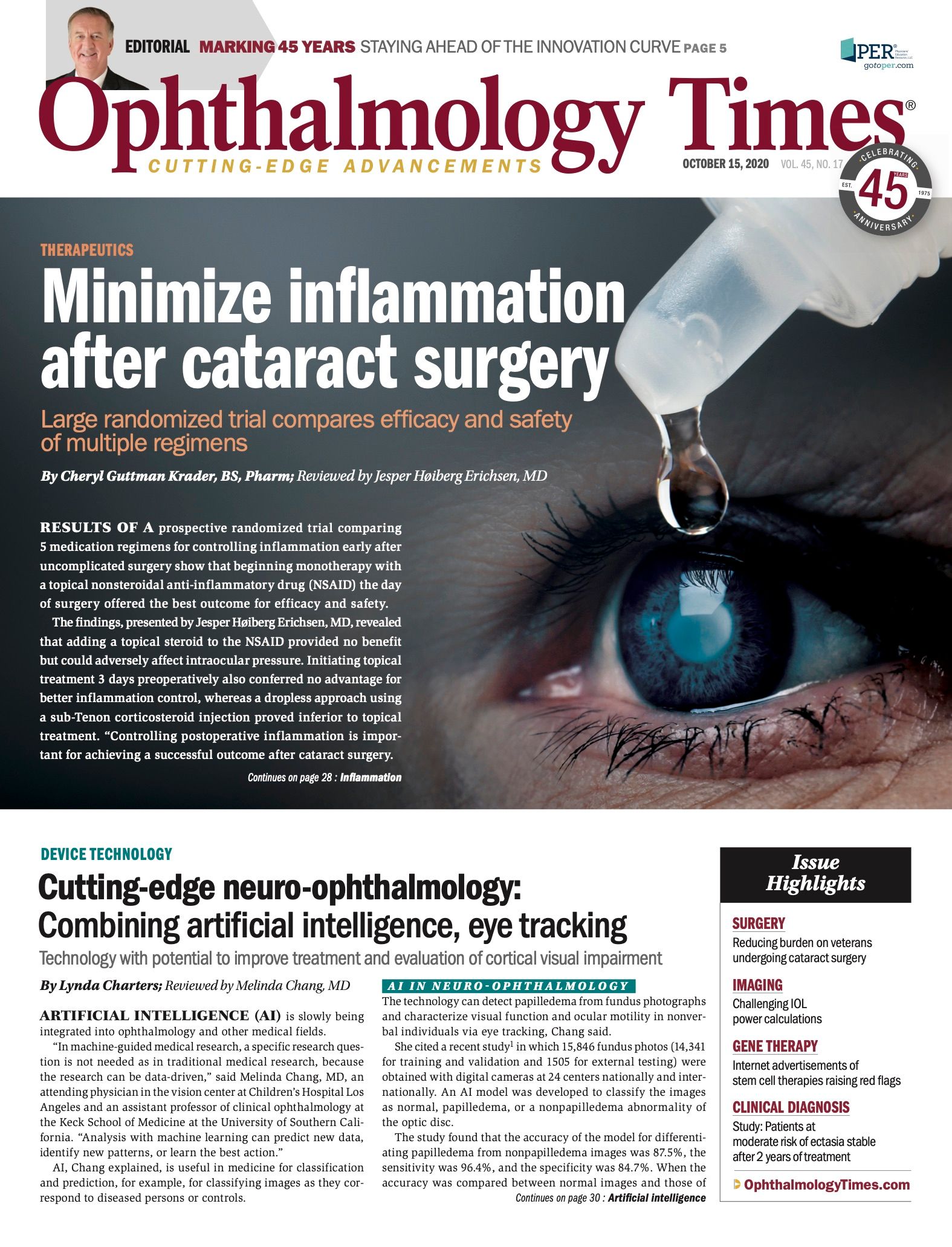Publication
Article
Digital Edition
Glaucoma 45 years later: Much changed, much unchanged
Author(s):
Innovation, change has dominated the glaucoma specialty over the years.

Special to Ophthalmology Times®
When it comes to understanding who is affected by glaucoma, 1975 was a time of great confusion for those interested in the disease. The confusion persists.
Six years earlier, Mansour F. Armaly, MD, showed that without treatment few ocular hypertensive patients developed visual field loss over 5 years.
Prior to the study, widespread agreement that glaucoma was present when the IOP was over 21 mm Hg led ophthalmologists to recommend treatment whenever IOP was above this number.
Related: Glaucoma devices: Now and in the future
While prevalence surveys have dispelled the myth of 21 mm Hg, many ophthalmologists continue to believe that using an absolute level of IOP in making a glaucoma diagnosis is in the best interest of their patients.
The distinction between open angle and normal tension glaucoma as two different disease entities remains controversial.
Who should be treated?
The majority of the world’s people with glaucoma continue to be undiagnosed and untreated. In 1975, “correct” diagnosis and treatment were clear, and “easy,” even though often wrong.
Today, diagnosis and treatment are less clear, with limited understanding about the variability of rates of progressive damage.
Some tests considered essential in the past, such as tonography, are no longer used, while others, such as central corneal thickness or the retinal nerve fiber layer are used with great devotion.
Related: IOP homeostasis in glaucoma: Looking below the surface
Angle-closure glaucoma caused by relative pupillary block was a leading cause of irreversible blindness in 1975. The development of laser iridotomy offered the possible elimination of pupillary block glaucoma.
However, angle-closure is still a major cause of worldwide blindness. Recent studies are clarifying who needs treatment and what types of treatment are preferable.
Modern cataract surgery has emerged as a useful early intervention for patients with angle closure as well as for those with open angles and glaucomatous nerve damage.
The search for a workable definition of glaucomatous disease has intensified. Many acknowledge that the etiology of this optic neuropathy varies substantially between individuals and populations.
The fixation on determining whether someone has glaucoma based upon cross-sectional information at a single time point has been questioned by some who believe there is little benefit, and perhaps harm, in labelling individuals as having or not having glaucoma without longitudinal data.
Clinical trials have shown that a large proportion of glaucoma patients randomly assigned to no treatment show no progression for many years.
Deciding on the actual need for treatment is still difficult, at least partially because of the lack of data that relates early changes to the development of actual disability caused by glaucomatous vision loss.
Related: Funding new technologies for glaucoma treatment
Fear of going blind is so great that both doctors and patients alike tend to opt for the apparent safety they associate with treatment, even in circumstances when treatment is not necessary to preserve quality of life.
On the other hand, fear of problems caused by incisional surgery is sometimes so great that doctors and patients tend to defer surgery that is actually necessary to prevent the development of troublesome loss of vision in those with severe and progressive disease. Future studies need to focus on the long term consequences of glaucoma and beneficial treatments.
In diagnostics, during the past 45 years, we have seen effort, thought and finances devoted to both functional and structural assessment of people with or suspected of having glaucoma. Transition from manual to automated perimetry has been a true advance.
The decreased utilization of fundus photographs has likely had a negative impact on glaucoma care. Small changes in optic nerve and retinal nerve fiber layer can be better measured with a host of novel imaging technologies, but the significance of such change is often not clear.
A diagnosis of glaucoma is best made longitudinally; measures that change over time without validated reference parameters for comparison may not represent progress.
The efforts to show structure-function correlation with regard to optic nerve pathology have been limited by large variability using present day tools, thus limiting the use of structural change as a surrogate for present or future vision loss in individuals.
Related: Traditional glaucoma surgery in the era of MIGS procedures
Glaucoma therapeutics has seen two great milestones in pharmacologic care: The introduction of topical beta-blockers in 1978 and prostaglandin analogs in 1996. Both, along with topical carbonic anhydrase inhibitors and alpha adrenergic agonists introduced in the 1990s, are now available as generic medications.
Nevertheless, their cost is prohibitively high for many, particularly in developing countries. Noncompliance with medications remains a large problem; missing appointments is also a great concern.
Laser trabeculoplasty, first introduced about 45 years ago, was initially slow to be utilized.
Frequency of use increased in the 1990s with the development of more selective approaches; clinical trials indicate initiating treatment with laser is a good option for many patients with open- angle glaucoma.
Minimally invasive surgical approaches, focused most often on increasing outflow through Schlemm’s Canal, and often combined with cataract surgery, have allowed surgical glaucoma to enter comprehensive ophthalmology practice.
While these procedures have been shown to decrease the short-term postoperative dependence on IOP-lowering medications amongst patients with mild to moderate glaucomatous disease, the long term benefit that they provide requires further study.
Related: Study results show that surgical system decreases IOP in patients with POAG
Various implantable devices designed to give trabeculectomy-like results have shown mixed results. Cyclodestructive procedures have been refined and are viable alternatives in some cases.
Increasing use of drainage device implantation in eyes having had prior incisional surgery has been supported by clinical trials, but trabeculectomy remains the most efficacious first procedure for patients otherwise destined for severe vision loss from glaucomatous disease. Recent evidence shows improved visual function with IOP lowering in some patients.
Conclusion
The proper care of people with glaucoma was and remains based on knowledgeable personalization of care, skillfully delivered.
This includes awareness of the loose relationships between findings, such as intraocular pressure, and how patients function and feel.
Anchoring diagnosis and treatment to what is important to patients was not well done in 1975, and there is still much room for improvement in 2020.
Read more glaucoma content here

Newsletter
Don’t miss out—get Ophthalmology Times updates on the latest clinical advancements and expert interviews, straight to your inbox.




